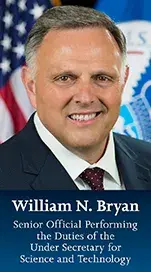We are living in unprecedented times. COVID-19 has claimed thousands of lives and upended countless others. Now more than ever, it is vital that we all listen to public health guidelines, abide by government mandates, and do our part to protect ourselves and our community. It is also important to remember that the world does not stop turning – even during a pandemic. There are still good things worth celebrating.
 With that in mind, we are celebrating Earth Day this week with a look back on some projects that supported the protection of our environment. It’s a well-known fact that over 70 percent of Earth is covered in water. So, to celebrate Earth Day, it makes sense to also celebrate the sea.
With that in mind, we are celebrating Earth Day this week with a look back on some projects that supported the protection of our environment. It’s a well-known fact that over 70 percent of Earth is covered in water. So, to celebrate Earth Day, it makes sense to also celebrate the sea.
Our dedicated colleagues in the U.S. Coast Guard (USCG) are kept busy protecting the United States’ nearly 100,000 miles of coastline. Their motto of Semper Paratus, "Always Ready" applies to every aspect of their mission. Because in addition to being the maritime law enforcement branch of the United States Armed Forces, USCG is also the nation’s maritime first responder and operates under the U.S. Department of Homeland Security (DHS) during peacetime.
All branches of the federal government are required to abide by the National Environmental Policy Act. This includes DHS and the Science and Technology Directorate (S&T). S&T has a formal environmental policy statement that declares it shall “Leverage our unique talents, knowledge, technical capabilities, and leadership to achieve environmental sustainability with continual improvement” as well as several other important goals and requirements.
One such goal is to combat oil spills, which can wreak havoc on ocean life. The National Oil and Hazardous Substances Pollution Contingency Plan designates USCG as the lead agency to plan for and respond to these environmental threats. So, when S&T created a Center of Excellence at the University of Alaska, Anchorage, USCG specifically noted the importance of mapping oil spills in the Arctic as a research priority. And accordingly, the Arctic Domain Awareness Center (ADAC) came up with a solution.
The Tethys Long Range Autonomic Underwater Vehicle or LRAUV is a helicopter-portable, torpedo-shaped device with oil sensors and navigation capabilities. This oil-spill-mapping robotic system can rove for an impressive 15 days and travel for 373 miles without recharging batteries.
After years of rigorous testing in the waters of Monterey Bay, California, LRAUV was subjected to the challenging conditions of under-ice testing in Lake Bog, Maine, this past February. The research team is planning to continue assessing the system’s performance in the Alaskan Arctic through July 2020.
Another cool project at ADAC is Arctic Geofencing, which will help safeguard marine life habitats. Arctic Geofencing is a monitoring system that alerts USGC when vessels enter restricted areas. It will help determine whether vessels are complying with environmental protection and conservation regulations.
ADAC is not the only S&T source of scientific breakthroughs helping save our sea life. Prize competitions are an important pipeline for innovative solutions to technical challenges. One such challenge was devising environmentally-friendly buoy moorings. This conundrum had plagued USCG for many years – until they teamed up with S&T.
Buoys are used for navigation. They direct water traffic and protect vulnerable life such as seaweeds and corals. The problem is, most buoys are attached to the seafloor by concrete anchors, also called sinkers, and heavy metal chains. There are two issues with this system. In addition to the real estate the sinkers take up, when the connecting chains aren’t pulled taut, they can scrape and severely damage the very organisms the buoys are meant to protect.
The call was put out, and, as with any crowd-sourcing search for scientific solutions, many different creative approaches were proposed. A promising answer came in the form of an Hawaiian innovator who suggested a narrow screw anchor instead of a heavy metal chain and an elastic rope to prevent scraping of the ocean floor. The durability of this solution will be closely tracked and a final report will be completed.
We’re proud of these projects at S&T. Even when it’s a scary place to live, the Earth is our home and it deserves our protection.
